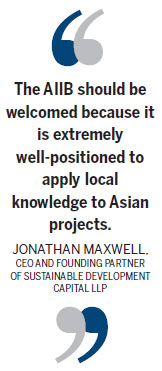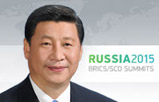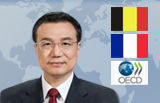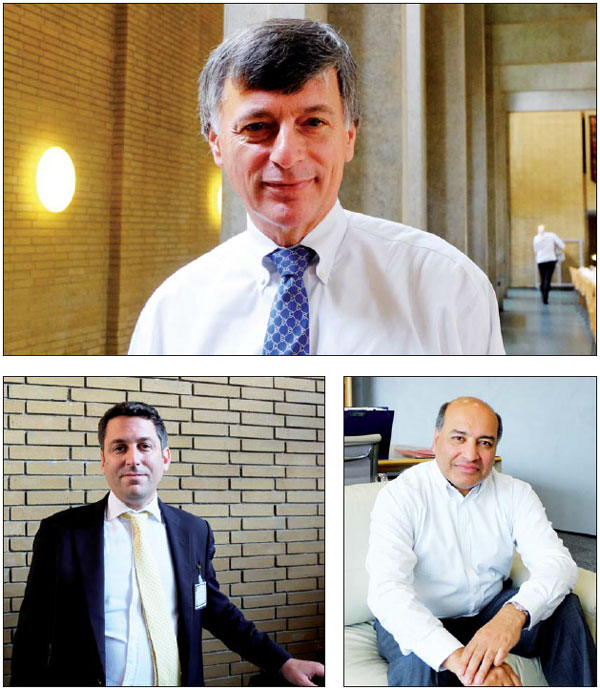Great expectations from newcomer
Updated: 2015-07-10 07:28
By Cecily Liu and Zhang Chunyan(China Daily Europe)
|
|||||||||||
Senior figures in international finance hope to be inspired by new bank with a 'clean slate'
International institutions are keen to co-invest in projects with the Asian Infrastructure Investment Bank as well as share their knowledge, and have high expectations that the new bank will provide innovative and inspiring funding solutions, analysts say.
On June 29, representatives from 57 founding countries signed an agreement to establish a legal framework for the China-initiated lender. The 60-article agreement specified each member's share as well as the governance structure and policymaking mechanism of the bank.
|
Top: Bernard Sheahan, global industry head of infrastructure and natural resources for International Finance Corp; Above left: Jonathan Maxwell, CEO and founding partner of Sustainable Development Capital LLP; Above right: Suma Chakrabarti, president of the European Bank for Reconstruction and Development. Photos by Cecily Liu / China Daily |
Bernard Sheahan, global industry head of infrastructure and natural resources for International Finance Corp, says his institution is keen to work with the AIIB both in helping it to establish the required structure and in co-investing in projects once the bank is running.
IFC is an international financial institution that offers investment, advisory and asset management services to encourage private sector development in developing countries. It is a member of the World Bank Group.
"The AIIB is very important as a way to bring in long-term capital to infrastructure, especially for emerging markets, and because it will start with a clean sheet, it can show us new and efficient ways on how to do things," Sheahan says.
In the beginning stages of the AIIB's growth, his staff at the IFC will focus on helping the bank set up the right structure, mandate and systems.
Once the AIIB is set up, IFC is hoping to co-finance projects and, in some instances, refer projects to them and help them analyze projects. These are likely to be public private partnership proposals, especially energy projects, which have seen a big increase in demand.
Sheahan says working in partnership with the AIIB has two key advantages - one is the increasing access to capital for larger projects, and second, the two institutions can benefit from sharing experiences.
These systems will govern how the AIIB assesses the viability of infrastructure projects, from financial and economic perspectives, he says. There will also be systems that enable institutions to deal with nonfinancial risks, including reputation, corruption, and environmental and societal aspects of projects, such as when a project concerns the relocation of people.
While keen to share experiences with the AIIB, Sheahan says he hopes IFC can learn from the new bank in bringing about efficiency.
"Those of us at existing institutions will see how (the AIIB) can devise new systems that are more efficient, which we can learn from," he says.
Danny Quah, professor of Economics and International Development at the London School of Economics and Political Science, also says that it is quite likely that AIIB and the Asian Development Bank will work cooperatively.
"ADB is going through the milestone project called Great Mekong Subregion. It is definitely along the infrastructure dimension. One of the critical differences between the ADB and AIIB is the relative emphasis," Quah says.

"ADB's main emphasis is really much more about poverty reduction. It is obviously critical that Asia still has a very large number of the world's extremely poor population. A lot of things that AIIB tries to do is about infrastructure investment, by building infrastructure, lift economy, end up doing poverty reduction," Quah says.
According to some estimates, the infrastructure needs of Asian countries are estimated at $8 trillion over the next decade.
When it comes to challenges for the new AIIB, Sheahan says that, in today's funding environment for infrastructure projects, a key challenge involves the issue of how to use public funding to mobilize private-sector funding, because ultimately the financial contribution that public sector institutions can make is small compared with the total requirement.
"So for the AIIB to also participate in a project means they can bring some finance but more importantly they can bring their innovative methods of motivating private-sector capital," Sheahan says.
Suma Chakrabarti, president of the European Bank for Reconstruction and Development, says the EBRD and the AIIB have great potential to cooperate on sustainable development projects, and his team is already in "intense and wide-ranging" dialogue with the AIIB.
However, it is not just the amount of investment in infrastructure or where that investment comes from that matters, because what counts is the infrastructure's quality, he says. "By quality of infrastructure, I mean the energy and emission intensity, the resource efficiency of the investments the EBRD and the AIIB countries will make over the next decade."
Meanwhile, private-sector players are also eyeing the establishment of the AIIB keenly, believing that it will provide good opportunities for co-investment.
"The AIIB should be welcomed because it is extremely well-positioned to apply local knowledge to Asian projects," says Jonathan Maxwell, CEO and founding partner of Sustainable Development Capital LLP, which invests in projects globally including Asia.
Maxwell says one area that greatly needs funding from multinational institutions is investment in the early stages of infrastructure projects, which he believes existing multinational institutions are not doing well.
Often, in the early stages of large infrastructure projects, the capital needed is small, but it is the hardest funding and riskiest investment, he says. "It relies on very clear understanding of regulatory risk, relating to the planning, consenting and design."
Another area in which funding from institutions such as the AIIB could help is private-sector-procured projects, which are of a much smaller scale compared with public-sector-procured projects, but are more decentralized.
"As a fresh institution, there is an opportunity for the AIIB to allocate capital more efficiently, and to where it can have the greatest impact," Maxwell says.
"We need to know how they invest in projects - whether they focus on debt or equity, whether they invest directly or through agencies, and at what stage of projects they will invest in," he says.
Nicola Cassarini, senior fellow for Asia at Istituto Affari Internazionali in Italy, says: "By start financing the first project, they could show how the bank operates. This would be very important, as Europe has emphasized best practices, good governance, environment and official standards in the bank, and it will be in their interest to show the world that the bank is operating in line with global standards."
Contact the writers at cecily.liu@chinadaily.com.cn and zhangchunyan@chinadaily.com.cn
(China Daily European Weekly 07/10/2015 page20)
Today's Top News
BRICS 'disappointed' by US failure to ratify IMF reform
BRICS summit condemns WWII 'misrepresentation'
SCO can play major role in Silk Road, Xi says
Stocks surge as government moves to save market
Doubts over heroes' authenticity grow with widening Internet access
Sun and sand is where the wealthy from Chinese mainland head
Chinese stocks plunge to three-month low
Macedonia expects first mutiple unit train from China
Hot Topics
Lunar probe , China growth forecasts, Emission rules get tougher, China seen through 'colored lens', International board,
Editor's Picks

|

|

|

|

|

|







